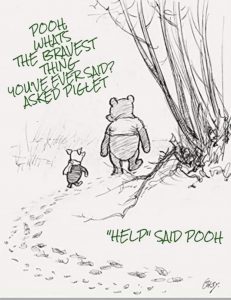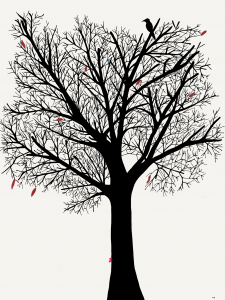I believe that there is a profound connection between student learning and student lived experiences and the ability of educators to embed who students are with what they are learning. I can vividly recall, as a young learner, the teachers who were most impactful in my learning. They showed genuine care for my well-being and often went above and beyond academic support, in unconventional ways, to understand my needs, including my personal challenges based on my lived circumstances, and to support me in all aspects of life. I can honestly say that the relationships those teachers established with me directly helped to shape me into the person I am today. Knowing who your students are, their identities, their barriers, their abilities and their lived experiences allow educators to create the conditions for dynamic learning opportunities that are culturally relevant and impactful to student learning.
What do experts say?
Scholars Gloria Ladson-Billings and Geneva Gay have spent decades at the forefront of researching Culturally Relevant and Responsive Pedagogies. Their findings have been clear: “integrating a student’s background knowledge and prior home and community experiences into the curriculum and the teaching and learning experiences that take place in the classroom are paramount to meeting the needs of all students”.
Furthermore, research shows that learning needs of students from diverse backgrounds are not being met equitably in classrooms across the system. For example, in the current age of destreaming mathematics for grade nine students across the system, it is important that teachers are well versed and equipped with the necessary tools and strategies to support all learners in an academic classroom. When we acknowledge students’ cultural experiences and prior knowledge, we are better positioned to strengthen their ability to see themselves as doers of mathematics, language, science, history, art and so on. They are further empowered to interpret the world around them with a critical social justice lens.
Activity
The “Where I’m From” poetry activity is a great strategy you can use to have students explore their cultural identities and values, to foster collaboration with their peers, to create a positive classroom environment and to learn about students’ lived experiences. This activity should be culturally relevant to the students in the classroom and intentionally structured to engage all learners at multiple entry points. This will help to foster a sense of community in the classroom and help the teacher understand who the students are and how to embed their real-time lived experiences into the teaching and learning process.
My 2 Cents
I think teachers should spend the first week or two of each school year engaging students in conversations about their (the students) own identity and lived experiences and the intersectionality of their identity. This would allow students to feel comfortable and confident in sharing who they are, as well as their thoughts and opinions, with others in the classroom. Try to create a brave and nurturing space where students feel comfortable talking about their racial background, their gender identity, and their preferred name. You can use culturally relevant books, videos, posters etc. that can lead to those discussions where students are invited and encouraged to talk about their own racial, gender and cultural identities. Teachers can then incorporate students’ identities and lived experiences into the instructional planning and teaching program.
Whether it’s a math activity, collaborative inquiry in history or a STEM project, it is important that teachers provide opportunities for students to reflect on their interests, their passions and how they see themselves within the development of the task. Use culturally relevant and responsive resources that reflect student identities, interests and lived experiences. Providing opportunities for small group discussions and descriptive feedback will help students make meaningful connections to that task and to their real-time lived experiences. Educator’s willingness to share their own identity with students, their own experiences in school as a young learner and how their experiences inform and influence their decision-making process are effective strategies in building strong relationships with students that engage them in embedding their own lived experiences into their learning. If we truly believe in developing young minds, creating strong leaders and critical thinkers then we must create the space for that to happen within the classroom. When we let go of the notion that we are the holder of knowledge in the classroom, we create opportunities for students to develop and demonstrate leadership, to become critical thinkers and to advocate for justice and social change.



 For me as a kid, there was no better feeling than opening up a new box of 64 Crayola crayons. The big box with the flip top lid and the sharpener on the side. I can remember agonizing over which colour to pick first and being so thrilled by the perfection of the colour palette in neat rows in that box. I loved to draw and colour. I could do it for hours never lifting my attention from the page. In adulthood, I abandoned doing art for pleasure. It seemed silly for me to sit around and draw or paint for no real reason. I felt I should be doing something productive. A few years ago I began to create art again and realized how much I had missed it and how much joy it brought to my life. I create digital art now, which isn’t quite the same rush as opening a box of crayons but it is easier to share with others-like the picture above. I have recently learned about the health and wellness benefits of creating. Creating is rejuvenating, it is rest and it is soul food.
For me as a kid, there was no better feeling than opening up a new box of 64 Crayola crayons. The big box with the flip top lid and the sharpener on the side. I can remember agonizing over which colour to pick first and being so thrilled by the perfection of the colour palette in neat rows in that box. I loved to draw and colour. I could do it for hours never lifting my attention from the page. In adulthood, I abandoned doing art for pleasure. It seemed silly for me to sit around and draw or paint for no real reason. I felt I should be doing something productive. A few years ago I began to create art again and realized how much I had missed it and how much joy it brought to my life. I create digital art now, which isn’t quite the same rush as opening a box of crayons but it is easier to share with others-like the picture above. I have recently learned about the health and wellness benefits of creating. Creating is rejuvenating, it is rest and it is soul food.